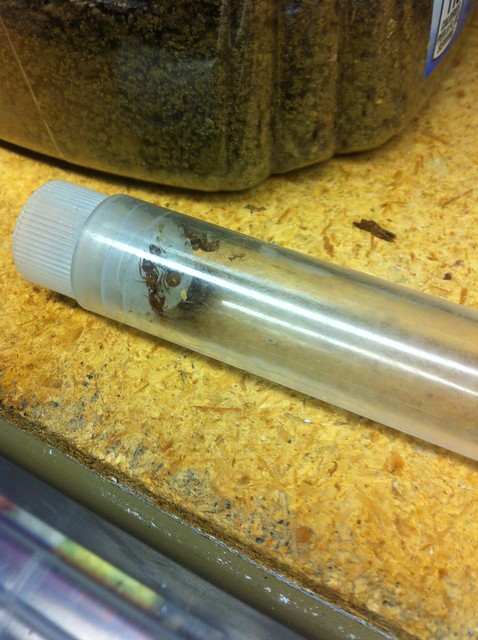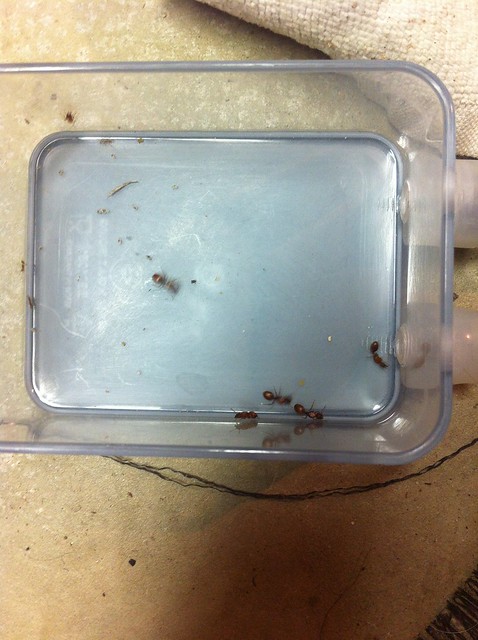I collected part of a Solenopsis sp. colony under a rock I flipped. I know it's Solenopsis because they look extremely similar to Solenopsis invicta that we have around here, plus they're polymorphic. I got the queen, some major workers, about 20 minor workers, and a nice-sized pile of brood.
1. Location of collection: Trail near residential areas.
2. Date of collection: 1-14-15
3. Habitat of collection: Disturbed chaparral.
4. Length: No clue.
5. Coloration, hue, pattern and texture: Queen is dark red like a Pogonomyrmex californicus worker. The minors vary from all red to red with a brown/black gaster. The majors are all red with a lighter colored gaster.
6. Distinguishing characteristics: The only thing I can tell clearly is that there are two petiole nodes, and that the eyes are small.
7. Anything else distinctive:
8. Nest description: As stated previously, the nest was under
9 . Pictures: Any photo I get will be taken with a potato, so they're not really worth posting. I know photos are the best thing to use to ID anything, but I can't get a good pic of the queen and the workers are too small. If anyone has a good camera around here please let me know so I can borrow it?
Edit: I made a mistake when I declared that it was Solenopsis sp. Oops.
Edited by kellakk, January 27 2015 - 2:07 PM.
























